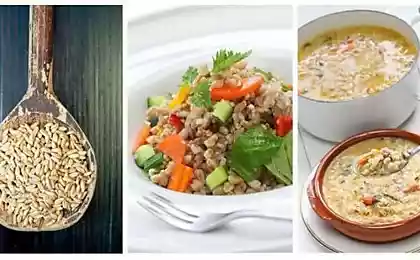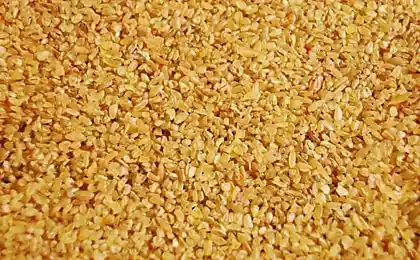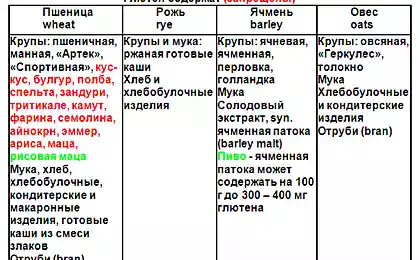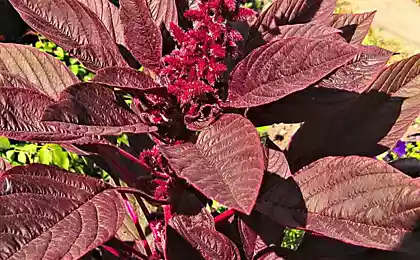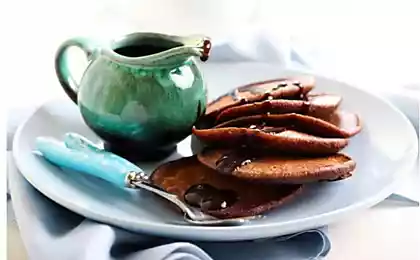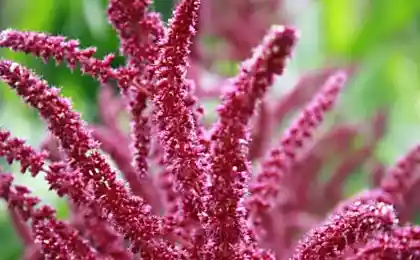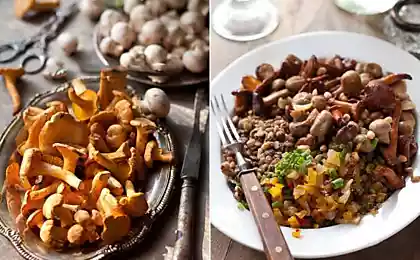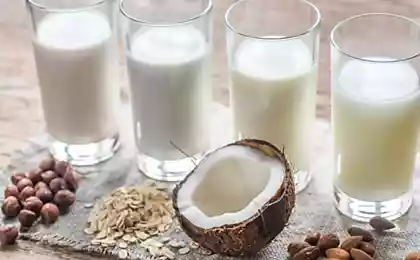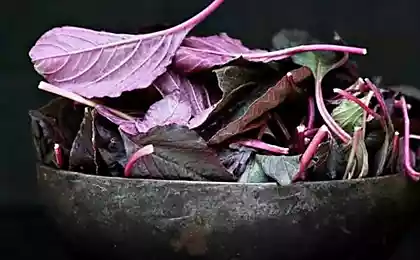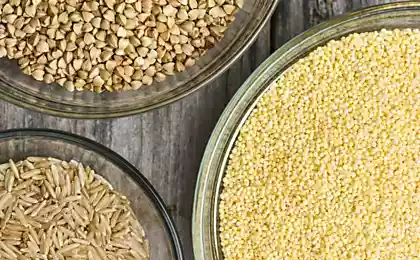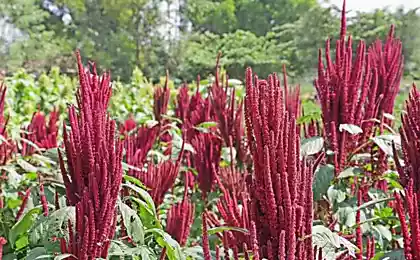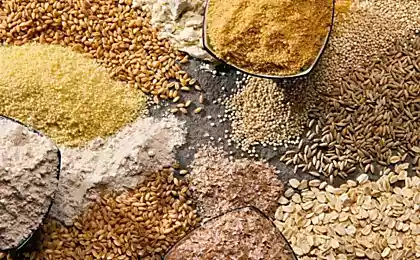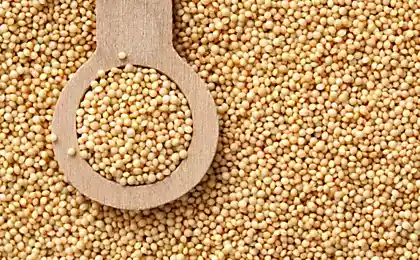819
14 useful grains, about which not all know
What comes to mind when you hear the word "porridge"? Oatmeal, buckwheat, semolina or millet... We have collected a list of "unpopular" cereals from A to z, which can be good for the body to diversify the home range of cereals
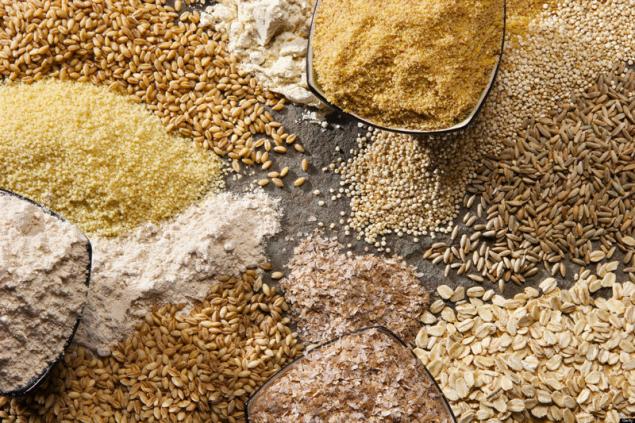
Porridge – a dish known since childhood. It fed us by our mothers and grandmothers. Now it benefits we are trying to convince our children. But always eat rice, semolina or oatmeal boring even to ourselves. Fortunately, modern shelves contain a far greater variety of grains than in the days of our childhood. And about some of the cereals we just managed to forget. Restore the space together.
Emaratemarat (the lizard) is an annual plant, whose seeds are used as cereals. Was banned in the 16th century, as it was used for magical purposes. In the 70-ies of the last century has seen its rebirth because of the valuable nutrient properties which it is endowed. Amaranth is used in agriculture, food and pharmaceutical industries.

Benefits: Seeds contain high amounts of protein, lysine and other amino acids. In addition, they contain iron, calcium, magnesium, phosphorus and potassium, which are important elements in the diet of pregnant women and diets, in the treatment of diseases of the nervous and musculoskeletal systems. The seeds also include the ingredient squalene, which stops the aging process.
Method of preparation: Grain amaranth is quite tight, so cooked about 20-25 minutes. One Cup of cereal requires 2.5 — 3 cups of water. In the process of cooking you need to stir the porridge that it is best absorbed water. Will be good as a savory side dish as a sweet porridge. Also the grain of this plant may reveal quite unexpected and turn into fast food, namely popcorn. However, the flour of serizy turns thick, so cook her cakes better with the addition of other flours to make products out of the air.
Osnovyanenka (arnautka, Gorlovka) – grits consisting of powdered spring wheat yellow-transparent color. Sometimes small and coarse. The exact is unknown, where did this name cereals. However, it is assumed that it comes from the Albanian people Arnaut. There is also a special kind of Turkish troops with such a name. In Kursk province the word was used as a brane, which meant monster, infidels, brutal people.
Benefits: Like all cereals, it contains all the many useful vitamins, minerals, amino acids and unsaturated fats. They can be used to strengthen the immune system, improve brain and cardiovascular system. Everything, like all the Kashi whole grains and wheat, it allows you to slow the aging process and improve condition of skin, hair and nails.
Method of preparation: Cereal flour is cooked for about 30 minutes. Because of its rather "violent temper", you should first wash the barley, and only then to cook. The ratio of cereals and water should be 1:4. Grains finely ground should be cooked in a ratio of 1 Cup grits and 2 of water (milk). Of the small grains you can also make meatballs, casseroles and pastries. From it it is possible to cook like salty dishes and sweet.
Burgerburger — grits treated with boiling water, dried, and parboiled durum wheat. After steaming wheat dried in the sun, after which they are hulled and crushed. It is the steaming drying gives a unique taste and aroma to the dish the future of the cereals.
According to rough and imprecise data, it is cooked already 4000 years. Now it is especially popular in countries with a rich culinary past: Armenia, India, middle East countries and all the Mediterranean countries. But in Russia it is not quite forgotten. And lately it takes quite a lot of popularity among connoisseurs of cereals.
Benefits: the highest nutritional value has whole grain bulgur brown color, from which virtually no shot rich in trace elements upper shell. Bulgur is saturated with vitamins, especially b vitamins, K, E, beta-carotene, minerals (phosphorus, iron, selenium, copper, zinc, manganese, potassium, sodium, calcium). Also grain contains unsaturated fatty acids, saccharides, ash substances and fiber. Regular consumption of bulgur is beneficial to the state of the nervous system for which vitamins are the most important and perhaps the main "food". A large number of mineral salts helps to restore the metabolism, makes skin and hair more "alive". The complexion takes on a healthy hue, the hair becomes shinier and grow well.
Refers to cereals that are easily digested and perfectly digested without weighing state.
Method of preparation: May serve as a delicate side dish, one of the ingredients for pilaf, salads and soups. There is also the bulgur finely. Here it is possible to prepare a large variety of useful cutlets and patties. Cooked about 20 minutes. If you want to cook crumbly porridge, then you first need to briefly soak to reduce cooking time, and gluten correctly opened, otherwise the bulgur will become blurred.
According to legend, in one of the campaigns, Suvorov reported that to feed the troops has nothing to do. Remained only a little different types of cereals. Then, the great commander, without hesitation, had ordered all cereals to mix together. Since then, porridge, consisting of several grains, is called "Suvorov". Thereby Suvorov was able to contribute to the development of Russian cuisine.
It is not surprising that such a mixture of cereals fell much taste. Not only that it is unusual in taste and chemical composition, it is of great benefit than loving.
Camucamu – distant ancestor of wheat, which in Egypt was known as Khorasan, which translates as "soul of the earth." A few grains were found in the late 40-ies of the last century during excavations in Egypt, after which it again began to cultivate. In size of grain of ancient wheat superior to the modern version in two or three times. It also has a rich nutty flavor.
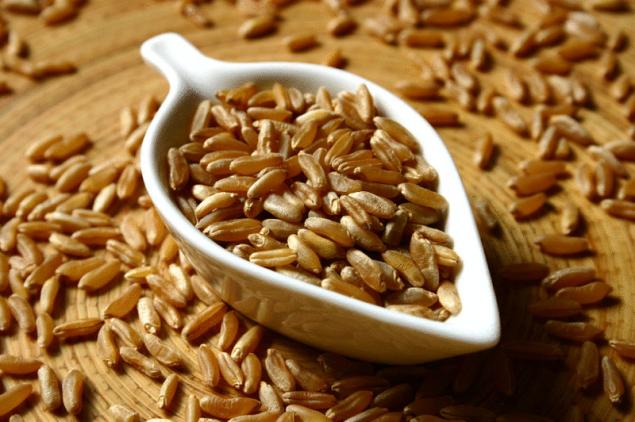
Useful properties: it is Possible that it is due to her size, grain Kamut berries contain much more nutrients, such as zinc, magnesium, proteins, amino acids, mineral salts, lipids and vitamin E than modern varieties of wheat.
Methods of cooking: Kamut berries cook porridge and side dishes with vegetables and mushrooms. If at night leave them soaked in water, the cooking takes only 10 minutes. From flour of wild wheat bread and pasta. Beans are also good oven cereals or crackers.
Quinoaquinoa (quinoa, quinoa) is an annual plant, growing on the slopes of the Andes. It is considered a pseudo cereal. However, for the civilization of the Incas, it was one of the three food sources. They idolized him so much that it considered "the Golden grain".
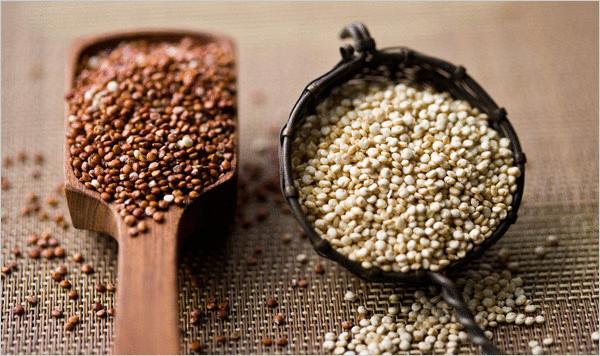
Benefits: Quinoa is one of the richest, for our body, source of protein, which are very similar in composition with animal protein. This is especially valuable quality for people who refused to animal food.
The composition of amino acids, of which about 20 types of grain is very similar to milk. In addition of protein in the cereal contain carbohydrates, fats, fiber, minerals and vitamins B. quinoa is Also rich in calcium, iron and phosphorus, the amount of which is not inferior to the fish.
Method of preparation: Very often, quinoa replaces rice or buckwheat. It is also good not only as a garnish, but also as a primary ingredient in warm salads and soups. By the way, is cooked quinoa in the same way as many other cereals. Before cooking cereals it is advisable to rinse. Then just pour it in a saucepan and cover with water with a ratio of 1 Cup grain to 2 cups water. Cook for 15-20 minutes. After that, you can safely bring to the table.
Kropackova CORN grits – is made from ground grains of corn. Cereal this cereal is valuable, even when thermal treatment, it retains all its beneficial properties. Recommended for people with allergies, as it is added to allergenic foods.
Benefits: Corn grits are known for their detoxifying properties: promotes the excretion of various harmful substances, radionuclides and toxins from the body. It also contains many b vitamins, E, a, PP And trace elements – silicon, iron, and many others. And 80% unsaturated fatty acids allow you to take it to those products that regulate cholesterol levels. Nutritionists recommend eating corn porridge several times a week to get all the valuable substances that it has.
Method of preparation: to Prepare corn porridge is very simple, as most cereals in water or milk: 1 Cup grits and 2 cups water( milk). If we talk about corn flour, often make casseroles and grits or Italian polenta. Also of flour to get a light and tasty pancakes yellow.
COUS-cous cous-cous are classified as wheat cereals. Initially, the porridge prepared from millet. Now it is accepted to prepare from semolina derived from durum wheat. The first time it was mentioned in a cookbook of the 13th century. It is believed that the first time she began to be consumed nomadic people, the Berbers. For some time she was only in the middle East and the Mediterranean, and then she fell in love with the whole world.
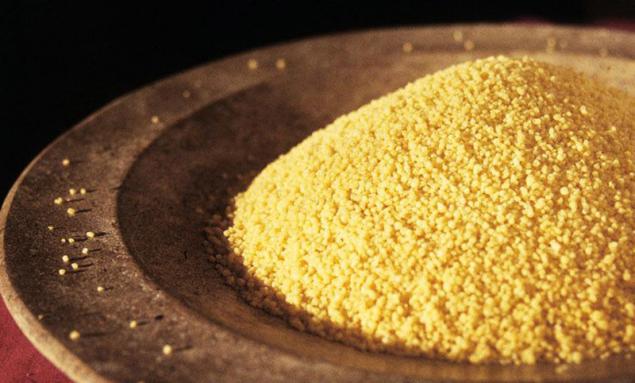
Benefits: In croup there is a large concentration of copper, which prevents premature graying and promotes hair strengthening in General. Besides copper are very important to improve our level of hemoglobin and is indispensable for joint problems. Vitamin B5, which is also in the mess, saves from insomnia and fatigue. Also, this barley is desirable for use for people suffering from diseases of the gastrointestinal tract. Perfect those who wish to lose extra pounds.
Method of preparation: The best preparation ku-Kusa – for a couple, as the mess will not fall apart and will keep vitamins of group B. If there is no double boiler, no problem. You can just stir the pot by filling it with hot water and leave for a while under the lid. Her cooking is strictly contraindicated. But it is easy to use useful for making casseroles and baking.
Polapola – a special kind of wheat, grains which have a high nutritional value. The larger grain spelt wheat. They are also well-protected from pests, adverse external effects by a layer of hard inedible skin (chaff). It is because of this layer of grains is highly resistant to radiation and various contaminants.
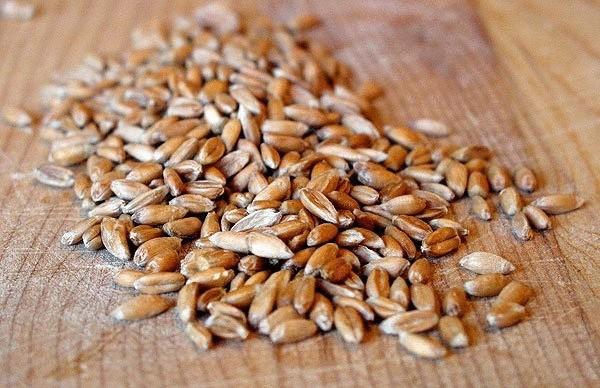
According to archaeological research, spelt cultivation started already in the fifth Millennium BC And the ancient Romans, who believed spelled valuable cereal culture, have used it grain and bread made from its flour in their ritual ceremonies.
Benefits: Spelt is much superior to wheat on the content of vegetable protein, unsaturated fatty acids, fiber, iron and b vitamins. And it contains mucopolysaccharides help our immune system grow and develop.
The constant presence of this cereal in the diet will contribute to strengthening the immune system, normalizing blood sugar levels, improve the work of cardiovascular, endocrine, nervous, digestive and reproductive systems.
Methods of cooking: In Italy, spelt is widely used for making risotto, and in the United States and Germany from its flour prepare all kinds of sauces and desserts. In Russia spelled it as porridge.
If you cook porridge in the old tradition, you must first 1 Cup grain spelt soak for 5-6 hours in a mixture of 0.5 cups yogurt and 1 Cup of cold water. Then rinse and put in a pot, which pre-pour 0.5 cups of water and 0.5 cups of milk. Mix well and put to boil on low heat until then, until all the liquid has boiled off.
But if you cook with spelt is not wheat, a crisp garnish, it is necessary several times rinse and cover with water (3-3. 5 cups). You need to boil it on a slow fire of 30-40 minutes as the kernels tough and require thorough cooking.
The most common Russian dish – porridge. She has always been a symbol of health and the subject of religious reverence in Russia. Before the porridge was cooked and on weekdays and holidays. She has always had a special place not only in a simple peasant table, but at Royal.
Before the cereal was even a holiday — the Day of acculinna-grecheskiy (June 26). A week before the holiday or the week after that was made to sow buckwheat. And on the very Akulina cooked "worldly mess", the tables were carried outside and regaled the porridge Wanderers and beggars.
Prinicipality or wheat cereal produced from whole wheat grains. It happens from whole grains and coarse crushing. The first option retains a great storehouse of nutrients. Knew our ancestors, who wrote about her history and said that the porridge with oil to ruin not possible. However, nowadays it is not popular: some forgot about it, others just don't know about her "abilities".
Useful properties: it contains vitamins such as A, C, B6, B12, E and PP. Thanks to this property can improve vision, make hair shiny, skin smooth and nails strong. Everything, it contains b vitamins, which reduce muscle fatigue and stimulates the immune system.
Method of preparation: If we talk about whole-wheat version of cream of wheat, it is better to use it as a garnish or dairy porridge for Breakfast. Well-washed grits is cooked for 20 minutes, and then preferably another 30 minutes to let it "uprate" in the oven. But chopped beans it is best to do the meatballs, casseroles and pies.
Effeff (dwarf millet, Teff Abyssinian) – cereal "living" in northeastern Africa for more than 5000 years. Ethiopia's millet and is a staple food. And for good reason, as this plant is characterized by endurance and worth of its members.
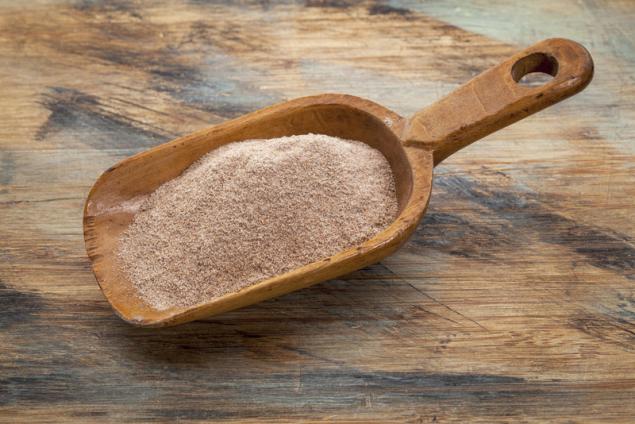
Benefits: Teff contains many valuable vegetable protein, rich in various amino acids. Due to the high iron content and low phytic acid from anaemia in Ethiopia is almost not affected. What can be said about the European population. In addition, dwarf millet contains a lot of calcium, potassium, magnesium, zinc, vitamin B1, phosphorus. Despite the fact that many types of millet are similar in their composition, no other cereal has such a high quality mineral and protein composition as Teff. Also, the millet is great for people who are forced to adhere to a gluten-free diet, since in its composition it is missing.
Methods of cooking: In Africa of Teff cooked traditional bread and cakes. However, its grains can be cooked porridge or a side dish. And flour is perfect for cakes and pancakes.
Tolocation (talaqnama flour) is a powdered oat or barley grain, which had been pre-steamed, dried, and cleaned. It is in the form of flour. Previously this process took more than one day. Modern technologies allow to make the production process faster and more efficient, thereby preserving more of the useful properties of grain. Talaqnama flour does not form gluten, which swells well in water and thickens quickly.
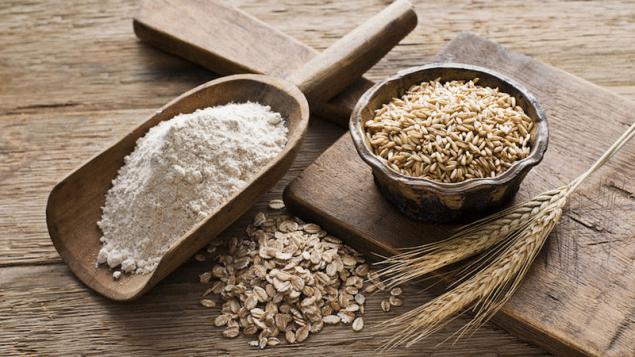
In the late XIX – early XX century in Russia was even built entire plants for the production of cereals, oatmeal, including oatmeal. At the time this grain was highly valued for its properties and quality, for what repeatedly received awards at agricultural shows, and also was exported.
Benefits: part toloknyanki flour includes all necessary for the proper functioning of the body substances: proteins, fats, carbohydrates, vitamins and minerals. It contains a substance lecithin, which is fed to the human nervous system. Its lack can cause fatigue, irritability, insomnia, depression and nervous exhaustion. Stimulates an increase in hemoglobin and the absorption of vitamins A, D, E and K.
Also of note is contained in the oatmeal bioflavonoids, which are considered strong antioxidants for our body. They prevent the formation of various tumors in the body and eliminate toxins and also actively participate in the regeneration of cells.
Method of preparation: For cooking porridge toloknyanki don't have to spend a lot of time. Pour enough hot oatmeal with water or milk, stir and leave for a few minutes. Also oatmeal is easy to prepare the bread (tortillas). Enough of it knead the dough with the addition of kefir or yogurt, add spices and send in the oven for a while. This version of the flatbread will serve as a healthy and hearty snack between meals.
Priceprice (freekeh, Frik, Frick, Frick, farik) is the last of the smoked wheat, which is harvested when the ears are still green. There are two types of Fricke: whole grain similar to wheat, but the green color, and coarsely chopped grain. For the first time Frick was mentioned in the beginning of XIII century in a cookbook of Baghdad.
Useful properties: it Has a low glycemic index, which is an excellent condition of insulin production. As a result, helps in diabetes and prevents its appearance. Low-carb product with a good prebiotic effect that polezno for digestion.
Method of preparation: in the preparation of Fricke exudes a wonderful aroma of smoky and almost gives the meat flavor. That is why it is widely used in vegetarian cuisine. Frick from whole grains turns rough, so it to simmer for at least forty minutes, in the broth. Freak of crushed grain softer and softer, so its preparation does not require much time. This croup will serve as an ideal ingredient for meat and vegetable dishes.
Comitatus (capitate millet) is an annual grain crop plants of the family Gramineae. Refers to the ancient grain plants of Eastern Asia. In Russia, millet spread after the Russo-Japanese war (1904-1905), when the Russian soldiers brought the seed from Manchuria. When the soldier asked about the reason they decided to bring seeds, they replied that they were surprised by the attitude of local farmers to the cereal. They decided that if the Japanese are so cherished, then it is something special, and no mistake.

Useful properties: Millet is rich in carotene and fiber, b vitamins (especially B1, B2), as well as calcium, potassium, sulphur, magnesium, silicon and phosphorus. Groats and meal of green foxtail have a high content of protein, fat and carbohydrates. Vitamins give our body health and beauty. So, vitamin B1 is involved in metabolism, improves memory, combats depression and fatigue; vitamin B2 is involved in the processes of body growth and tissue regeneration, gives a healthy look to the hair and skin, and also plays an important role in the work of the organs of vision. It is known that small breeds can rid the body of toxins and heavy metals, so it is recommended to use the inhabitants of large cities, in which unfavorable environmental conditions.
Methods of cooking: as a cereal or bread it is widely used in Georgian cuisine. Mass, which is obtained from boiled cumiskey flour, Georgians called Gomi, and it's cooked in a metal pot on the stove. The only thing this dish is cooked with a small addition of corn grits. Porridge of green foxtail is also very easy to prepare by simply filling up the grain with water. Cumisha porridge, with dietary properties, like millet and tastes similar to semolina.
In Russia it was decided to solve many issues and to celebrate the holidays with porridge. So, in a sign of reconciliation, the enemies had to cook and eat porridge at the table. A Baptismal porridge "fun" fed father of a newborn baby – salt, pepper, mustard and horseradish, so he was able to appreciate all the hardships of childbirth wife.
Ackack is semolina, made from sanded particles milled barley kernels. Since ancient times it is widely used in folk medicine. Decoctions of it have antispasmodic, anti-inflammatory, tonic effect.
Useful properties: Particularly successfully used Accu diabetes. In barley grain contains vitamin a, almost all b vitamins, vitamins D, E, PP. The composition of barley include a wide range of trace elements. First and foremost, phosphorus, which is essential for proper metabolism in the body, but also for the brain. There are also such components as silicon, chromium, fluorine, boron, zinc. Modern nutritionists advise often eat barley porridge and soups people who are overweight, as well as diseases of the intestine, accompanied by constipation.
Ways of cooking: To cook porridge from barley grains, pour one Cup of beans 3-4 cups water(milk) and cook on medium heat for about 25 minutes. Then briefly write it under the cover that it was drawn. If you want to cook crisp cereal, 1 Cup cereal need pour only 2-2,5 cups of water.
Source: 12millionov.com/poleznye-kashi-14-krup.html

Porridge – a dish known since childhood. It fed us by our mothers and grandmothers. Now it benefits we are trying to convince our children. But always eat rice, semolina or oatmeal boring even to ourselves. Fortunately, modern shelves contain a far greater variety of grains than in the days of our childhood. And about some of the cereals we just managed to forget. Restore the space together.
Emaratemarat (the lizard) is an annual plant, whose seeds are used as cereals. Was banned in the 16th century, as it was used for magical purposes. In the 70-ies of the last century has seen its rebirth because of the valuable nutrient properties which it is endowed. Amaranth is used in agriculture, food and pharmaceutical industries.

Benefits: Seeds contain high amounts of protein, lysine and other amino acids. In addition, they contain iron, calcium, magnesium, phosphorus and potassium, which are important elements in the diet of pregnant women and diets, in the treatment of diseases of the nervous and musculoskeletal systems. The seeds also include the ingredient squalene, which stops the aging process.
Method of preparation: Grain amaranth is quite tight, so cooked about 20-25 minutes. One Cup of cereal requires 2.5 — 3 cups of water. In the process of cooking you need to stir the porridge that it is best absorbed water. Will be good as a savory side dish as a sweet porridge. Also the grain of this plant may reveal quite unexpected and turn into fast food, namely popcorn. However, the flour of serizy turns thick, so cook her cakes better with the addition of other flours to make products out of the air.
Osnovyanenka (arnautka, Gorlovka) – grits consisting of powdered spring wheat yellow-transparent color. Sometimes small and coarse. The exact is unknown, where did this name cereals. However, it is assumed that it comes from the Albanian people Arnaut. There is also a special kind of Turkish troops with such a name. In Kursk province the word was used as a brane, which meant monster, infidels, brutal people.
Benefits: Like all cereals, it contains all the many useful vitamins, minerals, amino acids and unsaturated fats. They can be used to strengthen the immune system, improve brain and cardiovascular system. Everything, like all the Kashi whole grains and wheat, it allows you to slow the aging process and improve condition of skin, hair and nails.
Method of preparation: Cereal flour is cooked for about 30 minutes. Because of its rather "violent temper", you should first wash the barley, and only then to cook. The ratio of cereals and water should be 1:4. Grains finely ground should be cooked in a ratio of 1 Cup grits and 2 of water (milk). Of the small grains you can also make meatballs, casseroles and pastries. From it it is possible to cook like salty dishes and sweet.
Burgerburger — grits treated with boiling water, dried, and parboiled durum wheat. After steaming wheat dried in the sun, after which they are hulled and crushed. It is the steaming drying gives a unique taste and aroma to the dish the future of the cereals.
According to rough and imprecise data, it is cooked already 4000 years. Now it is especially popular in countries with a rich culinary past: Armenia, India, middle East countries and all the Mediterranean countries. But in Russia it is not quite forgotten. And lately it takes quite a lot of popularity among connoisseurs of cereals.
Benefits: the highest nutritional value has whole grain bulgur brown color, from which virtually no shot rich in trace elements upper shell. Bulgur is saturated with vitamins, especially b vitamins, K, E, beta-carotene, minerals (phosphorus, iron, selenium, copper, zinc, manganese, potassium, sodium, calcium). Also grain contains unsaturated fatty acids, saccharides, ash substances and fiber. Regular consumption of bulgur is beneficial to the state of the nervous system for which vitamins are the most important and perhaps the main "food". A large number of mineral salts helps to restore the metabolism, makes skin and hair more "alive". The complexion takes on a healthy hue, the hair becomes shinier and grow well.
Refers to cereals that are easily digested and perfectly digested without weighing state.
Method of preparation: May serve as a delicate side dish, one of the ingredients for pilaf, salads and soups. There is also the bulgur finely. Here it is possible to prepare a large variety of useful cutlets and patties. Cooked about 20 minutes. If you want to cook crumbly porridge, then you first need to briefly soak to reduce cooking time, and gluten correctly opened, otherwise the bulgur will become blurred.
According to legend, in one of the campaigns, Suvorov reported that to feed the troops has nothing to do. Remained only a little different types of cereals. Then, the great commander, without hesitation, had ordered all cereals to mix together. Since then, porridge, consisting of several grains, is called "Suvorov". Thereby Suvorov was able to contribute to the development of Russian cuisine.
It is not surprising that such a mixture of cereals fell much taste. Not only that it is unusual in taste and chemical composition, it is of great benefit than loving.
Camucamu – distant ancestor of wheat, which in Egypt was known as Khorasan, which translates as "soul of the earth." A few grains were found in the late 40-ies of the last century during excavations in Egypt, after which it again began to cultivate. In size of grain of ancient wheat superior to the modern version in two or three times. It also has a rich nutty flavor.

Useful properties: it is Possible that it is due to her size, grain Kamut berries contain much more nutrients, such as zinc, magnesium, proteins, amino acids, mineral salts, lipids and vitamin E than modern varieties of wheat.
Methods of cooking: Kamut berries cook porridge and side dishes with vegetables and mushrooms. If at night leave them soaked in water, the cooking takes only 10 minutes. From flour of wild wheat bread and pasta. Beans are also good oven cereals or crackers.
Quinoaquinoa (quinoa, quinoa) is an annual plant, growing on the slopes of the Andes. It is considered a pseudo cereal. However, for the civilization of the Incas, it was one of the three food sources. They idolized him so much that it considered "the Golden grain".

Benefits: Quinoa is one of the richest, for our body, source of protein, which are very similar in composition with animal protein. This is especially valuable quality for people who refused to animal food.
The composition of amino acids, of which about 20 types of grain is very similar to milk. In addition of protein in the cereal contain carbohydrates, fats, fiber, minerals and vitamins B. quinoa is Also rich in calcium, iron and phosphorus, the amount of which is not inferior to the fish.
Method of preparation: Very often, quinoa replaces rice or buckwheat. It is also good not only as a garnish, but also as a primary ingredient in warm salads and soups. By the way, is cooked quinoa in the same way as many other cereals. Before cooking cereals it is advisable to rinse. Then just pour it in a saucepan and cover with water with a ratio of 1 Cup grain to 2 cups water. Cook for 15-20 minutes. After that, you can safely bring to the table.
Kropackova CORN grits – is made from ground grains of corn. Cereal this cereal is valuable, even when thermal treatment, it retains all its beneficial properties. Recommended for people with allergies, as it is added to allergenic foods.
Benefits: Corn grits are known for their detoxifying properties: promotes the excretion of various harmful substances, radionuclides and toxins from the body. It also contains many b vitamins, E, a, PP And trace elements – silicon, iron, and many others. And 80% unsaturated fatty acids allow you to take it to those products that regulate cholesterol levels. Nutritionists recommend eating corn porridge several times a week to get all the valuable substances that it has.
Method of preparation: to Prepare corn porridge is very simple, as most cereals in water or milk: 1 Cup grits and 2 cups water( milk). If we talk about corn flour, often make casseroles and grits or Italian polenta. Also of flour to get a light and tasty pancakes yellow.
COUS-cous cous-cous are classified as wheat cereals. Initially, the porridge prepared from millet. Now it is accepted to prepare from semolina derived from durum wheat. The first time it was mentioned in a cookbook of the 13th century. It is believed that the first time she began to be consumed nomadic people, the Berbers. For some time she was only in the middle East and the Mediterranean, and then she fell in love with the whole world.

Benefits: In croup there is a large concentration of copper, which prevents premature graying and promotes hair strengthening in General. Besides copper are very important to improve our level of hemoglobin and is indispensable for joint problems. Vitamin B5, which is also in the mess, saves from insomnia and fatigue. Also, this barley is desirable for use for people suffering from diseases of the gastrointestinal tract. Perfect those who wish to lose extra pounds.
Method of preparation: The best preparation ku-Kusa – for a couple, as the mess will not fall apart and will keep vitamins of group B. If there is no double boiler, no problem. You can just stir the pot by filling it with hot water and leave for a while under the lid. Her cooking is strictly contraindicated. But it is easy to use useful for making casseroles and baking.
Polapola – a special kind of wheat, grains which have a high nutritional value. The larger grain spelt wheat. They are also well-protected from pests, adverse external effects by a layer of hard inedible skin (chaff). It is because of this layer of grains is highly resistant to radiation and various contaminants.

According to archaeological research, spelt cultivation started already in the fifth Millennium BC And the ancient Romans, who believed spelled valuable cereal culture, have used it grain and bread made from its flour in their ritual ceremonies.
Benefits: Spelt is much superior to wheat on the content of vegetable protein, unsaturated fatty acids, fiber, iron and b vitamins. And it contains mucopolysaccharides help our immune system grow and develop.
The constant presence of this cereal in the diet will contribute to strengthening the immune system, normalizing blood sugar levels, improve the work of cardiovascular, endocrine, nervous, digestive and reproductive systems.
Methods of cooking: In Italy, spelt is widely used for making risotto, and in the United States and Germany from its flour prepare all kinds of sauces and desserts. In Russia spelled it as porridge.
If you cook porridge in the old tradition, you must first 1 Cup grain spelt soak for 5-6 hours in a mixture of 0.5 cups yogurt and 1 Cup of cold water. Then rinse and put in a pot, which pre-pour 0.5 cups of water and 0.5 cups of milk. Mix well and put to boil on low heat until then, until all the liquid has boiled off.
But if you cook with spelt is not wheat, a crisp garnish, it is necessary several times rinse and cover with water (3-3. 5 cups). You need to boil it on a slow fire of 30-40 minutes as the kernels tough and require thorough cooking.
The most common Russian dish – porridge. She has always been a symbol of health and the subject of religious reverence in Russia. Before the porridge was cooked and on weekdays and holidays. She has always had a special place not only in a simple peasant table, but at Royal.
Before the cereal was even a holiday — the Day of acculinna-grecheskiy (June 26). A week before the holiday or the week after that was made to sow buckwheat. And on the very Akulina cooked "worldly mess", the tables were carried outside and regaled the porridge Wanderers and beggars.
Prinicipality or wheat cereal produced from whole wheat grains. It happens from whole grains and coarse crushing. The first option retains a great storehouse of nutrients. Knew our ancestors, who wrote about her history and said that the porridge with oil to ruin not possible. However, nowadays it is not popular: some forgot about it, others just don't know about her "abilities".
Useful properties: it contains vitamins such as A, C, B6, B12, E and PP. Thanks to this property can improve vision, make hair shiny, skin smooth and nails strong. Everything, it contains b vitamins, which reduce muscle fatigue and stimulates the immune system.
Method of preparation: If we talk about whole-wheat version of cream of wheat, it is better to use it as a garnish or dairy porridge for Breakfast. Well-washed grits is cooked for 20 minutes, and then preferably another 30 minutes to let it "uprate" in the oven. But chopped beans it is best to do the meatballs, casseroles and pies.
Effeff (dwarf millet, Teff Abyssinian) – cereal "living" in northeastern Africa for more than 5000 years. Ethiopia's millet and is a staple food. And for good reason, as this plant is characterized by endurance and worth of its members.

Benefits: Teff contains many valuable vegetable protein, rich in various amino acids. Due to the high iron content and low phytic acid from anaemia in Ethiopia is almost not affected. What can be said about the European population. In addition, dwarf millet contains a lot of calcium, potassium, magnesium, zinc, vitamin B1, phosphorus. Despite the fact that many types of millet are similar in their composition, no other cereal has such a high quality mineral and protein composition as Teff. Also, the millet is great for people who are forced to adhere to a gluten-free diet, since in its composition it is missing.
Methods of cooking: In Africa of Teff cooked traditional bread and cakes. However, its grains can be cooked porridge or a side dish. And flour is perfect for cakes and pancakes.
Tolocation (talaqnama flour) is a powdered oat or barley grain, which had been pre-steamed, dried, and cleaned. It is in the form of flour. Previously this process took more than one day. Modern technologies allow to make the production process faster and more efficient, thereby preserving more of the useful properties of grain. Talaqnama flour does not form gluten, which swells well in water and thickens quickly.

In the late XIX – early XX century in Russia was even built entire plants for the production of cereals, oatmeal, including oatmeal. At the time this grain was highly valued for its properties and quality, for what repeatedly received awards at agricultural shows, and also was exported.
Benefits: part toloknyanki flour includes all necessary for the proper functioning of the body substances: proteins, fats, carbohydrates, vitamins and minerals. It contains a substance lecithin, which is fed to the human nervous system. Its lack can cause fatigue, irritability, insomnia, depression and nervous exhaustion. Stimulates an increase in hemoglobin and the absorption of vitamins A, D, E and K.
Also of note is contained in the oatmeal bioflavonoids, which are considered strong antioxidants for our body. They prevent the formation of various tumors in the body and eliminate toxins and also actively participate in the regeneration of cells.
Method of preparation: For cooking porridge toloknyanki don't have to spend a lot of time. Pour enough hot oatmeal with water or milk, stir and leave for a few minutes. Also oatmeal is easy to prepare the bread (tortillas). Enough of it knead the dough with the addition of kefir or yogurt, add spices and send in the oven for a while. This version of the flatbread will serve as a healthy and hearty snack between meals.
Priceprice (freekeh, Frik, Frick, Frick, farik) is the last of the smoked wheat, which is harvested when the ears are still green. There are two types of Fricke: whole grain similar to wheat, but the green color, and coarsely chopped grain. For the first time Frick was mentioned in the beginning of XIII century in a cookbook of Baghdad.
Useful properties: it Has a low glycemic index, which is an excellent condition of insulin production. As a result, helps in diabetes and prevents its appearance. Low-carb product with a good prebiotic effect that polezno for digestion.
Method of preparation: in the preparation of Fricke exudes a wonderful aroma of smoky and almost gives the meat flavor. That is why it is widely used in vegetarian cuisine. Frick from whole grains turns rough, so it to simmer for at least forty minutes, in the broth. Freak of crushed grain softer and softer, so its preparation does not require much time. This croup will serve as an ideal ingredient for meat and vegetable dishes.
Comitatus (capitate millet) is an annual grain crop plants of the family Gramineae. Refers to the ancient grain plants of Eastern Asia. In Russia, millet spread after the Russo-Japanese war (1904-1905), when the Russian soldiers brought the seed from Manchuria. When the soldier asked about the reason they decided to bring seeds, they replied that they were surprised by the attitude of local farmers to the cereal. They decided that if the Japanese are so cherished, then it is something special, and no mistake.

Useful properties: Millet is rich in carotene and fiber, b vitamins (especially B1, B2), as well as calcium, potassium, sulphur, magnesium, silicon and phosphorus. Groats and meal of green foxtail have a high content of protein, fat and carbohydrates. Vitamins give our body health and beauty. So, vitamin B1 is involved in metabolism, improves memory, combats depression and fatigue; vitamin B2 is involved in the processes of body growth and tissue regeneration, gives a healthy look to the hair and skin, and also plays an important role in the work of the organs of vision. It is known that small breeds can rid the body of toxins and heavy metals, so it is recommended to use the inhabitants of large cities, in which unfavorable environmental conditions.
Methods of cooking: as a cereal or bread it is widely used in Georgian cuisine. Mass, which is obtained from boiled cumiskey flour, Georgians called Gomi, and it's cooked in a metal pot on the stove. The only thing this dish is cooked with a small addition of corn grits. Porridge of green foxtail is also very easy to prepare by simply filling up the grain with water. Cumisha porridge, with dietary properties, like millet and tastes similar to semolina.
In Russia it was decided to solve many issues and to celebrate the holidays with porridge. So, in a sign of reconciliation, the enemies had to cook and eat porridge at the table. A Baptismal porridge "fun" fed father of a newborn baby – salt, pepper, mustard and horseradish, so he was able to appreciate all the hardships of childbirth wife.
Ackack is semolina, made from sanded particles milled barley kernels. Since ancient times it is widely used in folk medicine. Decoctions of it have antispasmodic, anti-inflammatory, tonic effect.
Useful properties: Particularly successfully used Accu diabetes. In barley grain contains vitamin a, almost all b vitamins, vitamins D, E, PP. The composition of barley include a wide range of trace elements. First and foremost, phosphorus, which is essential for proper metabolism in the body, but also for the brain. There are also such components as silicon, chromium, fluorine, boron, zinc. Modern nutritionists advise often eat barley porridge and soups people who are overweight, as well as diseases of the intestine, accompanied by constipation.
Ways of cooking: To cook porridge from barley grains, pour one Cup of beans 3-4 cups water(milk) and cook on medium heat for about 25 minutes. Then briefly write it under the cover that it was drawn. If you want to cook crisp cereal, 1 Cup cereal need pour only 2-2,5 cups of water.
Source: 12millionov.com/poleznye-kashi-14-krup.html
Japanese researchers created sticky sensor to read the indices of the internal organs
Awakening. About life and death
